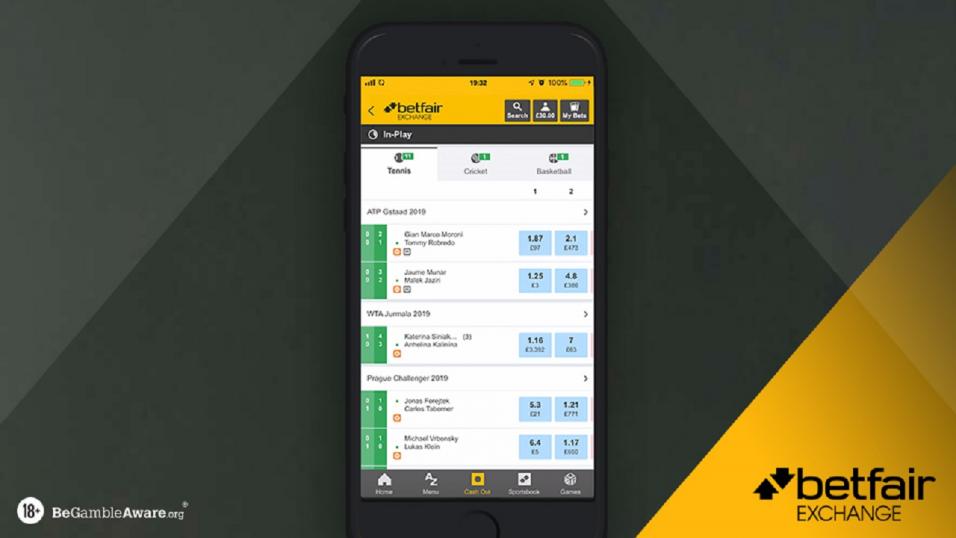Favourites and Longshots

One of main reasons to bet on the Betfair Exchange is that the odds are often better than traditional bookmakers, especially when it comes to outsiders compared to favourites.
On a liquid Exchange market, the 'overround' is generally around 102%, whereas a 'perfect market' would operate at 100%.
So, for example, if it was Rafa Nadal playing Rodger Federer in the tennis and the two couldn't be split, they'd both be available at 2.00. A liquid market which wasn't quite 'perfect' would operate at around 102%, so, in this case, Nadal might be 1.92 and Federer 2.00.
As an example, a fixed odds bookmaker might offer a market with an overround of 110%, so would have Rafa Nadal 1.65 and Roger Federer 2.00. Or they might make Nadal 1.78 and Federer 1.85, which would also be a market with an over-round of 110%.
The percentage after 100 is the house's margin, or to put it in simpler terms, how 'unfair' the market is. The more over 100% the market is, the more unfair it is.
You can always see what the market overround is on a Betfair market with the number expressed as a percentage, just to the left of the back price.
Fixed odds bookmakers won’t tell you what it is as it's not in their interest to do so.
Laying a book – an example
Let's say Betfair have just put up an (as yet unpriced) market on a six-horse race in two days' time at Wolverhampton, and a fixed-odds bookie is laying the following prices on a market with an over-round of 110%:
Horse Fixed-odds bookmaker prices
Red 3.00
Blue 3.50
Black 4.50
Purple 8.00
Brown 9.6
Yellow 41.00
A Betfair customer wants to replicate the market on the Exchange but is aware they can't offer an over-round of 110% or no-one will take his prices. So, they decide to run it at 103%. Why not 100%? Because if they did, they wouldn't make a profit.
A typical Betfair version of the race's market would see the runners priced up as follows to make up a 103% book. Let's call it Example 1:
Horse Fixed-odds bookmaker prices Exchange Odds
Red 3.00 3.10
Blue 3.50 3.60
Black 4.50 4.60
Purple 8.00 9.00
Brown 9.6 12.50
Yellow 41.00 50.00
To get to that 103% figure, the book as a whole needs to be more generous (102% plays 110%) than what they were offering but that could be all the runners being slightly bigger (as is the case here) or just one of them being bigger.
If they offered Black at 8.00 rather than the 4.50 on offer and kept all the other prices the same, they would have close to a 102% book. Or if they both offered the same book and made Red 2.90 rather than 2.00, it would also be running at 102%.
In other words, it is the sum of all the different odds that determine the overround, but favourites take up a bigger percentage of the book.
Just slightly lengthening the price on a warm or hot favourite (say from odds of 2.00 to 2.50) will have a big impact on the overround, whereas easing the price on an outsider (say from 40 to 42) will have very little impact at all.
This is more clearly illustrated in the table before, where you can see the percentages for each of the odds – and how the smaller the odds leads to a bigger percentage, and how the smaller shifts at the sharp end of the market lead to bigger changes in percentage. For instance, there is half a point in the odds between red and blue, which expresses itself as almost a 5% difference in possibility – but the difference in odds between purple and brown is 1.5 (on fixed-odds prices), but this is just a 2% difference in probability. Furthermore, the gap on exchange odds is even larger between these two – 3.5 points, but this leads to just over 3% difference in the implied probability percentage.
Horse Fixed-odds bookmaker prices Fixed-odds as percentages Exchange Odds Exchange odds as percentages
Red 3.00 33.3% 3.10 32.3%
Blue 3.50 28.6% 3.60 27.8%
Black 4.50 22.2% 4.60 21.7%
Purple 8.00 12.5% 9.00 11.1%
Brown 9.6 10.4% 12.50 8%
Yellow 41.00 2.4% 50.00 2%
109.4%102.9%
Why are outsiders better value on Betfair?
The exchange market is win only, so there’s no each-way element factored into the prices, whereas bookmaker price must include an EW element and potentially also factor in extra places and any other promotions that the particular bookmaker is running.
There’s also the fact that the overrounds are lower. EXC UK average overrounds close to race time are 101%-102%, so close to the true 100% book price. Bookmakers have to build in a profit margin for themselves so might bet to something like 105% or more depending on the type of race, they will cut a certain amount off the true price for each runner in order to achieve this. This difference manifests itself more explicitly the further down the betting you go, it will be marginal on an even money shot as this is the horse most people will want to bet on and with the best chance of winning, but much more obvious on an outsider. Therefore it’s not uncommon to see a 33/1 shot on the show trading at over double that price on the Exchange.
If using the above above, the Betfair customer offered 2.90 about Red when all the fixed odds bookmakers were offering 2.00. That price would stick out like a sore thumb and that 2.90 would be snapped up in no time.
Because their odds were no better than what everyone else was offering on all the other runners bar Red, (remember they left all the other prices the same and just made Red bigger), that might be as much business as his market would see.
They would then be hoping Red didn't come good rather than being in a position where he'd win on all outcomes, which is the whole point of laying a book.
Backers tend to prefer to side with favourites – 46% of all money staked at BSP on UK & Irish racing on the Betfair Exchange is on the favourite. After all, favourites are so-called, because the money is going on them.
Value-seeking punters might be savvy enough to know that the value on a market is a 30.00 chance that should be 20.00, but your average punter may just decide they prefer to go with the 2.50 chance, because they have a far greater chance of getting a payout.
So, when getting to that magic 102% number, layers are far more comfortable making the 15.00 chance available at 20.00 than the 2.50 chance available at 2.90.
By definition, the 30.00 outsider has far less of a chance of winning (a 3.3% implied probability) and also if the 30.00 chance did win, the layer still would have seen plenty of money for the 2.50 (a 40% implied probability) chance and other shorter-priced runners.















